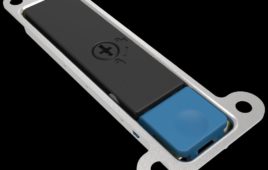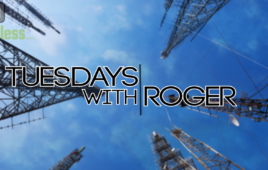AT&T CFO John Stephens said Thursday the carrier has its eye on winning a 2×10 MHz chunk of spectrum in the upcoming FCC incentive auction.
Though he declined to disclose how much the carrier is willing to spend, Stephens confirmed in comments delivered at the Morgan Stanley European Technology, Media & Telecom Conference that AT&T plans to take part in the upcoming auction and said the ideal takeaway would be a 2×10 MHz swath with “nationwide capability.”
“Buying spectrum has served us well and spectrum is a scarce asset, so we would expect to participate,” Stephens said. “I won’t suggest at what level, but we plan in our business plans to do that and we’ll see how it plays out, what’s available. Certainly, getting a nationwide opportunity is what we’ve talked about in the past. A 2×10 (MHz) nationwide capability is something that works very well with our network planning and our network team, but we will see how this develops.”
According to Stephens, such a buy would help bolster AT&T’s spectrum holdings and would be an easy way to add capacity in the face of ever-growing data demand. Already, Stephens said AT&T has repurposed for LTE “virtually all” of the spectrum it gained in its 2014 acquisition of Leap Wireless.
“Doing that gives us great capacity, great quality, but it doesn’t have the same cost structure as building more towers and it’s something that’s easily done,” Stephens said. “We have about 40 MHz of nationwide spectrum available, in the process of being tested and being put into service. So we have a really clear path to keeping our network at a very high-quality level and dealing with demand, with spectrum as well as with some capex spending.”
In addition to spending on spectrum, Stephens said AT&T is putting $9 billion into wireless capital expenditures this year to make further network improvements.
“While it may be a slightly lower number than we’ve spent in prior years, it’s still $9 billion dollars,” Stephens said “It’s a very strong, continued investment in a very high quality network.”
“We have probably more macro towers in service in the United States than any of the carriers,” he continued. “So with these towers already in place, and this deep, dense LTE network in place, we can now add spectrum to it at a different cost structure than building new towers or building small cells,” he said.
Unlike Sprint, Stephens said AT&T currently has no plans to offer a device leasing plan in addition to or in place of its equipment installment plan offers.
“We clearly have the capability to do a leasing plan and would be willing to do that if we felt like our customers wanted that,” Stephens said. “Right now that hasn’t been the case.”
Stephens said the customer base has shown “great acceptance” of the carrier’s NEXT installment plan and said the “vast majority” of subscribers are choosing the 24-month plan that lets users pay off their device over 30 months and upgrade after two years. However, Stephens noted that customers have been keeping their devices longer than originally expected, which has helped the company keep down its financing and new phone purchasing costs.
Though Stephens said AT&T will aim to provide “great” coverage and value for subscribers, he said the carrier won’t be drawn into bidding war to woo low-end customers who could better be served by the company’s Cricket prepaid brand.
“We are not going to chase every customer,” Stephens said. “Some of the offers that are out there have some economic challenges in our mind, so that we’re not going to repeat those or follow those. We’re going to take an approach that’s much more measured and much more focused on proving those high-quality customers great service, a great network, great products, great choices. And those customers who are more cost-conscious, give them a great prepaid offering on a great quality of service.”
Filed Under: Telecommunications (spectrums)




